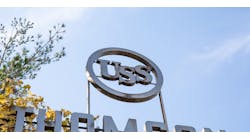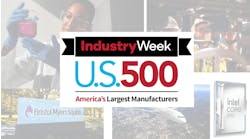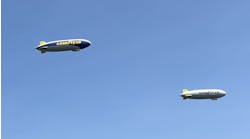Lineup Shift, Struggling Sales Funnel Sting Stellantis’ Volumes and Margins
North American shipments for Stellantis N.V. fell 18% in the first half compared to a year earlier as it maneuvers its way through a product lineup transition and an automotive industry its leaders say may not grow much at all in the coming quarters.
In response, CEO Carlos Tavares has launched an overhaul of the company’s North American marketing practices, approved a strategic review of the company’s operations in the United Kingdom because of that country’s zero-emissions vehicle sales mandates and said “there is no taboo” about possibly shedding some of Stellantis’ brands.
The parent company of Chrysler, Jeep, Fiat and a hatful of other marques on July 25 reported North American shipments of 838,000 vehicles in the first six months of 2024, down from about 1.02 million last year. Part of that decrease was due to a self-inflicted air pocket after Stellantis discontinued the production of several vehicles ahead of a series of upcoming launches.
The North American division’s adjusted operating profits were nearly cut in half year over year to about $4.7 billion, which Tavares and his team said was the primary reason behind the 40% overall drop in Stellantis’ adjusted operating income for the first half of the year.
Global first-half revenues fell 14% to $92.3 billion as Stellantis also faced price pressures in North America and Europe—something the leaders of General Motors Corp. had said two days before hadn’t troubled them this spring. On top of that, Tavares said Stellantis hasn’t been generating enough sales leads in North America and added that, helped by the pending rollout of a new marketing plan, trimming Stellantis’ North American inventories is “the No. 1 priority moving forward.”
“Our dealers […] tell me that the product is appealing, the product is great,” Tavares said on a conference call with analysts. “We have just to make sure that we have more people that go through the door.”
CFO Natalie Knight told analysts that the Stellantis team has lowered its overall industry outlook to ‘neutral’ from ‘supportive’ as it acknowledges the competitive landscape as well as buyers balking at some prices and being a bit slower than expected in adopting electric vehicles.
“This isn’t about our business,” Knight said. “This is just what we are seeing in the market, which is probably very low single-digit growth for the broader industry and a year that’s being characterized by higher cost consciousness from the consumer and rising industry supply.”
In blue-chip company
Investors hammered shares of Stellantis (Ticker: STLA) on its earnings report. By the end of trading July 26, they had fallen roughly 13% from their levels of the Friday before. The slide reflected a quarter wherein, Bernstein analyst Daniel Roeska told Yahoo Finance, Stellantis “did all the wrong things.”
“They pumped the inventory channel last year. Inventories went up. They had to put discounts back on. They had to put pricing down, Roeska said July 26. “They overspent on M&A, they overspent on capex and they basically had no free cash flow.”
The retreat by Stellantis shares was, however, still better than Ford Motor Co.’s performance for the week: Its stock lost a fifth of its value last week after President and CEO Jim Farley and his team reported second-quarter results hurt by higher warranty costs and larger losses in the company’s electric-vehicle group because of falling prices.
“It’s very clear that these are issues many of which we could have caught at launch” in years past, Farley told analysts about the warranty costs. “That is what’s happening now at Ford. We have to go through all these launches to find these—and, over time, we’re confident they come down.”
To that end, Farley and his team have delayed the launch of several refreshed truck and SUV models. Among them is the popular Explorer; CFO John Lawler said about 21,000 vehicles were being held in inventory at quarter’s end for additional quality checks.
And while GM’s leaders could talk relatively positively about pricing trends, they have a few problems to deal with, too. Chair and CEO Mary Barra is restructuring GM’s money-losing operations in China and the company booked a $600 million charge over the abandonment of production of the Cruise Origin autonomous car, which will be replaced by the next version of the Chevrolet Bolt EV.
“There is no taboo,” he said. “The brands are intangible assets that we respect. We believe that they are here to be leveraged […] If they are not able to monetize the value that they represent, then decisions will come.”
Another tough decision Tavares might need to make soon is about the future of Stellantis’ factories in the U.K., where a government mandate calls for ZEVs to account for a growing number of overall sales.
“We have two plants in the U.K. making BEVs,” Tavares said. “We cannot be in a position where our business model is damaged by the ZEV mandate. This is something that we have been discussing with the UK government, recognizing that it changed a few weeks ago. I must say that we have an intensive and productive dialogue. So far, we don’t have the answers we need.”





